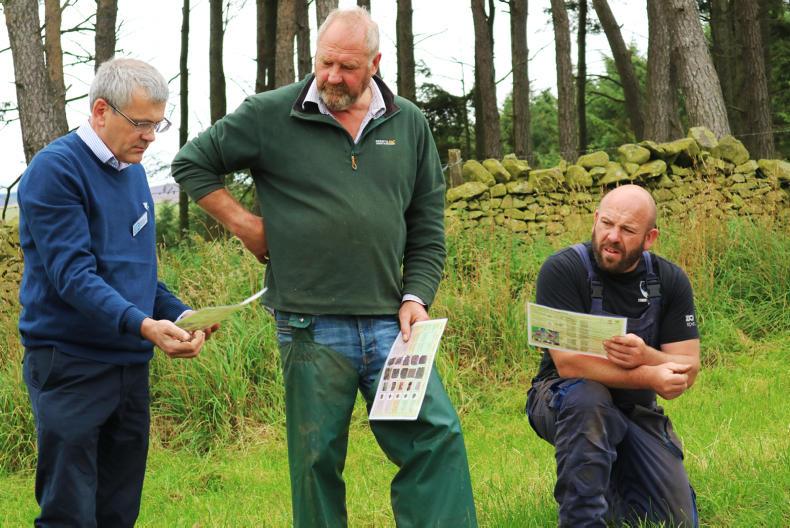Visually evaluating soil structure is an important step in addressing falling yields of grass growth, according to Dr Paul Hargreaves, who is a grassland researcher at SRUC in Dumfries.
“If your soil has been damaged, you have to determine how extensive it is in order to make management decisions,” he told farmers at the Peebles soil and nutrient network farm meeting, which was facilitated by the Farm Advisory Service.
“We have seen reductions in yield as soil structure becomes poor due to compaction. You need to find your limiting layer and address that.”
Soil structure affects root penetration, water availability to plants and soil aeration. By performing a visual evaluation, you can decide if compaction is in the upper layers, whereby aeration or burning off and direct drilling can address the problem. If it’s further down, ploughing or using a sward lifter (15-20cm deep) may be necessary.
“If you’ve got a compaction problem and continue on with the same management, you are likely adding to the problems and making it worse over time,” Hargreaves said. “Our research has shown that you can lose 3.5t/ha of dry matter yield in grass with just three years of poor soil structure management. Compaction pushes the soil particles together and you don’t want to do that on grassland.”
To visually assess the soil, you dig up an intact block of soil and examine the size of the aggregates.
“The majority of soil should have gaps for water and air. One of the key indicators can be a bad smell that comes out when you put in the spade, which is caused by hydrogen sulphide. The gaps between soil is where the microbial population lives, and that’s the activity needed to make fertiliser available to plants. The microbial population needs oxygen.”
Pick up next week’s Farmers Journal Scotland for an explanation on how to carry out a visual evaluation of soil.






 This is a subscriber-only article
This is a subscriber-only article














SHARING OPTIONS: